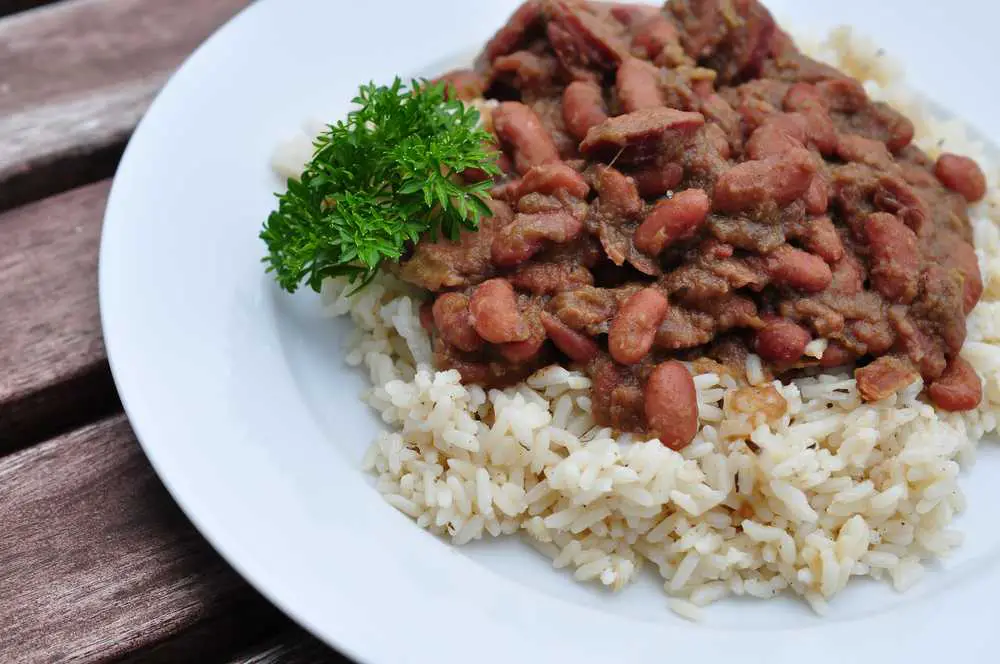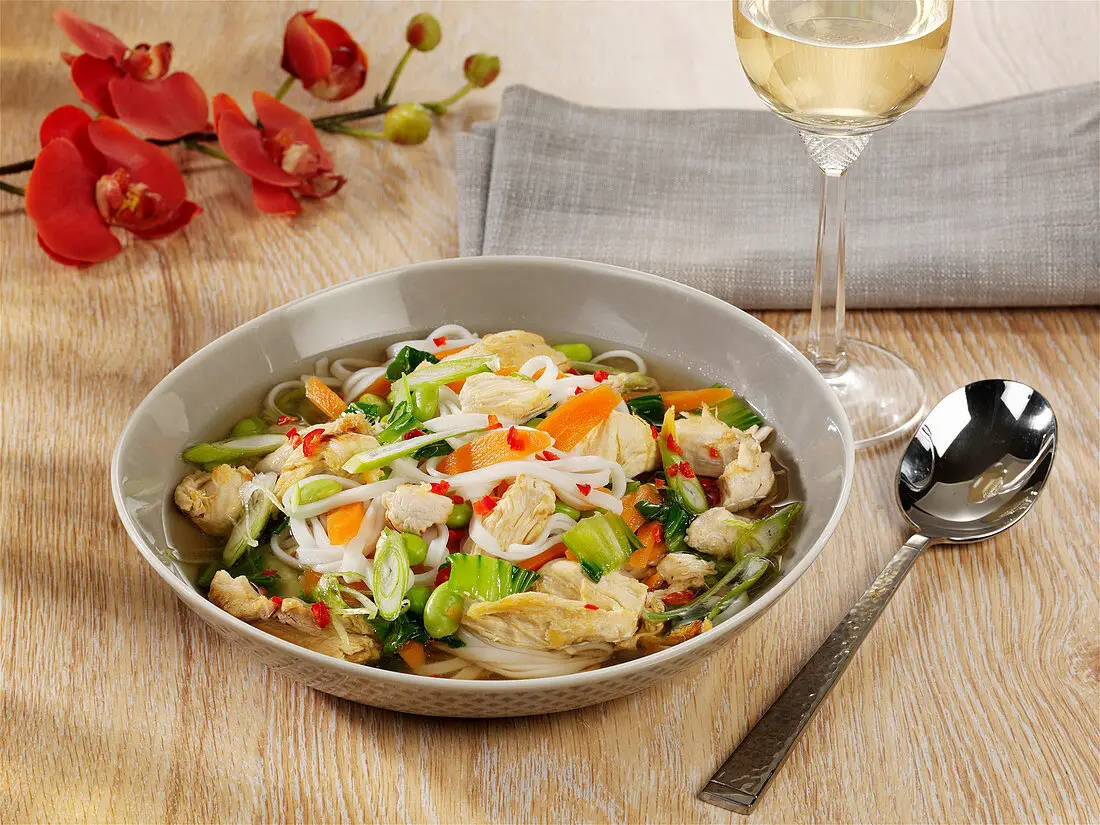Bibim Naengmyeon (비빔냉면) is a beloved Korean dish, especially popular during the hot summer months. It’s a perfect blend of spicy, sweet, and tangy flavors, all coming together in a refreshing cold noodle dish. The dish primarily consists of chewy buckwheat noodles mixed with a spicy sauce and garnished with fresh vegetables, boiled egg, and occasionally slices of meat.
Let’s dive into this easy-to-follow recipe so you can bring the flavors of Korea to your kitchen!
Ingredients:
For the noodles:
400g buckwheat noodles (Naengmyeon noodles)
Ice water (for rinsing)
For the sauce (Bibim sauce):
4 tbsp gochujang (Korean red chili paste)
2 tbsp rice vinegar
2 tbsp soy sauce
1 tbsp sugar (or honey)
1 tbsp sesame oil
1 tbsp sesame seeds
1 clove garlic, minced
1 tbsp gochugaru (Korean red pepper flakes) – optional for extra heat
1 tbsp Korean plum extract (optional, for sweetness and depth of flavor)
1 tsp mustard (optional, for a tangy kick)
For toppings:
1 cucumber, julienned
1 carrot, julienned (optional)
1 Korean pear, thinly sliced (optional)
1 hard-boiled egg, halved
Slices of cold beef (optional, such as brisket or boiled beef tongue)
1-2 ice cubes (for extra coldness)
Instructions:
Prepare the Noodles
Boil water in a large pot. Once it’s boiling, add your buckwheat noodles. Let them cook according to the package instructions, usually around 3-4 minutes.
Drain the noodles and immediately rinse them under cold running water to remove excess starch and stop them from cooking further. For an even cooler touch, dunk them into ice water for a few seconds.
Drain well and set aside.
Make the Bibim Sauce
In a mixing bowl, combine the gochujang, rice vinegar, soy sauce, sugar, sesame oil, sesame seeds, minced garlic, and gochugaru. If you want a bit of sweetness, add the Korean plum extract.
Mix well until the sauce is smooth and all the ingredients are incorporated. Taste and adjust for sweetness, spiciness, or tanginess according to your preference.
Assemble the Dish
Place a serving of the cold noodles in a bowl.
Generously spoon the bibim sauce over the noodles, ensuring every strand gets a coat of the spicy goodness.
Add the toppings: julienned cucumber, carrot, Korean pear, and a half of the boiled egg. If you’re using beef slices, arrange them on the side of the noodles.
Add one or two ice cubes to keep the dish cold and refreshing.
Mix and Enjoy!
Before eating, mix everything well so the sauce coats the noodles and the toppings.
Serve immediately and enjoy the refreshing, spicy kick of Bibim Naengmyeon!
Tips for the Perfect Bibim Naengmyeon:
Noodle texture: The noodles should be chewy but not hard. Ensure you rinse them in cold water properly to achieve that perfect texture.
Balance of flavors: Bibim Naengmyeon is all about a balance between sweet, spicy, and tangy.
Adjust the sauce according to your taste preference, especially if you prefer more heat or
sweetness.
Ice cubes: Adding ice cubes is optional but highly recommended for an extra cold and refreshing experience.
Meat options: While traditionally Naengmyeon includes beef slices, you can keep it vegetarian by skipping the meat or adding tofu.
Bibim Naengmyeon is the ultimate dish to beat the heat while tantalizing your taste buds with bold and vibrant flavors. It’s a fun and simple recipe that can be customized to your liking, making it perfect for those who love to experiment with Korean cuisine.
Enjoy this refreshing cold noodle dish at home, and impress your family or friends with your Korean culinary skills!
Customizing Your Bibim Naengmyeon:
One of the best parts about Bibim Naengmyeon is how adaptable it can be based on your personal preferences or dietary restrictions. Here are a few ideas to help you put your own twist on this classic Korean dish:
Vegan or Vegetarian Bibim Naengmyeon:
If you’re looking for a plant-based version of this dish, simply omit the meat and egg. You can substitute with marinated tofu or tempeh for added protein.
Consider adding more vegetables like sliced radish, mung bean sprouts, or even seaweed for a fresh and crunchy texture.
Adjusting the Spice Level:
For those who can’t handle too much heat, you can reduce the amount of gochujang and gochugaru in the sauce. Alternatively, add a bit of extra sugar or honey to tone down the spice without losing the flavor.
If you’re a fan of intense heat, feel free to add more gochugaru or even some finely chopped fresh chili peppers.
Adding More Texture:
To give your Bibim Naengmyeon more depth and texture, consider adding a handful of crunchy ingredients like roasted peanuts, crispy fried onions, or toasted seaweed (gim).
Kimchi is also a fantastic addition for those who love fermented flavors. It adds another layer of spiciness, sourness, and crunch.
Boosting the Freshness:
While cucumber and Korean pear are traditional in Bibim Naengmyeon, you can add other fruits and vegetables like thinly sliced apple, bell peppers, or even watermelon radish for a colorful and fresh twist.
Herbs like mint, cilantro, or basil can also lend a unique and refreshing aroma to the dish.
Experiment with Noodles:
Although buckwheat noodles are traditional for Bibim Naengmyeon, you can experiment with other types of noodles like soba, rice noodles, or even spiralized zucchini for a low-carb option.
Pairing Your Bibim Naengmyeon:
To round out your meal, Bibim Naengmyeon pairs beautifully with other Korean side dishes (banchan) or mains. Here are a few ideas:
Korean BBQ:
Bibim Naengmyeon is often served alongside grilled meats in Korean BBQ, providing a cooling contrast to the smoky flavors of beef, pork, or chicken.
Kimchi:
Whether it’s traditional napa cabbage kimchi, cucumber kimchi, or radish kimchi, the fermented tang and crunch of kimchi complement the sweet and spicy sauce of Bibim Naengmyeon perfectly.
Tteokbokki:
If you love spicy food, consider pairing your noodles with Tteokbokki (spicy rice cakes). This combination is a flavor explosion, especially for those who crave extra heat and chewy textures.
Korean Fried Chicken:
For a more indulgent pairing, Korean fried chicken’s crispy, juicy texture goes hand in hand with the cold and refreshing Bibim Naengmyeon. The spicy-sweet sauce of the noodles balances out the richness of the fried chicken.
Nutritional Benefits of Bibim Naengmyeon:
This dish isn’t just delicious, it’s also packed with nutrients! Here’s a quick look at what you’re getting:
Buckwheat Noodles: Rich in fiber and antioxidants, buckwheat noodles are a great gluten-free alternative to wheat-based pasta. They are also lower in calories, making them a great option for a lighter meal.
Gochujang: Made from fermented soybeans, gochujang is a rich source of protein, vitamins, and minerals. The fermentation process also contributes to a healthy gut microbiome.
Vegetables: The fresh vegetables in Bibim Naengmyeon provide essential vitamins and minerals. Cucumbers are hydrating, carrots are rich in beta-carotene, and Korean pear offers a healthy dose of fiber and antioxidants.
Bibim Naengmyeon is a dish that not only satisfies your taste buds with its complex layers of flavor but also offers a nutritional boost. Whether you’re looking for a quick lunch, a refreshing dinner, or a dish to impress guests at a summer party, Bibim Naengmyeon ticks all the boxes.
Feel free to adjust the recipe to suit your tastes, and don’t be afraid to experiment with new flavors and textures. Once you’ve mastered the basics, this dish can become your go-to when you’re craving something both spicy and refreshing.
So, grab your chopsticks, mix it all up, and enjoy the bold and zesty flavors of Korea right from the comfort of your home!


















